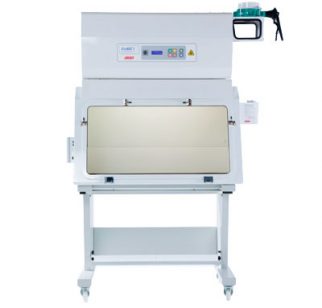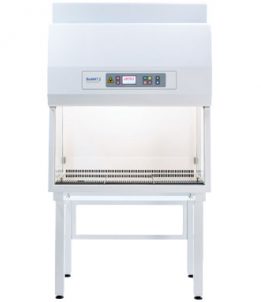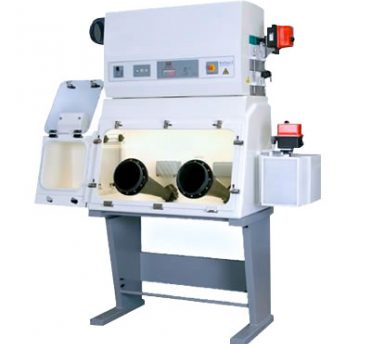
Advice guides
Biological Safety Cabinets - Types and Classes
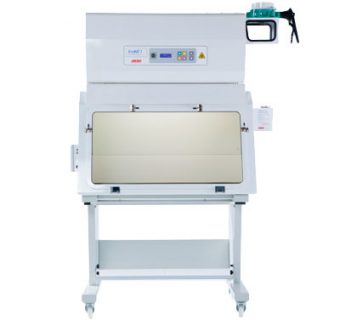
Class 1
Biological Safety Cabinets
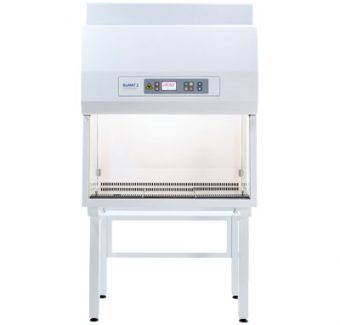
Class 2
Biological Safety Cabinets
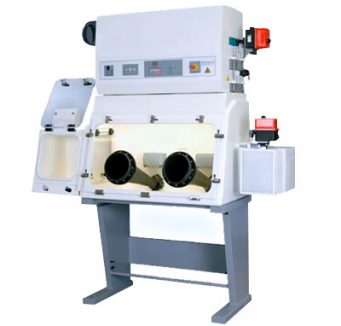
Class 3
Biological Safety Cabinets
Let our advice guide help you understand more about the different types of Biological Safety Cabinets available today, as well as their main benefits and uses.
Biological Safety Cabinet Uses
Biological Safety Cabinets offer protection from microbiological contamination in the laboratory environment, including both operator and product protection.
They are utilised by a wide range of scientific, research and development organisations within both the commercial and non commercial sectors, including pharmaceutical, medical, clinical research, defence, education and general healthcare sectors.
Biological Safety Cabinets safeguard users, materials and the environment from aerosol hazards and other types of environmental contamination.
Biological Safety Cabinets provide:
- Isolating equipment for biomedical research
- Safety devices for biological hazard prevention
- Laboratory equipment performance testing
- Occupational hygiene and safety
- Environmental cleanliness
- Disease decontamination and prevention
They are most commonly used in biotechnology, pharmaceutical
and clinical laboratory processes.
Biological Safety Cabinet Names
As well as Biological Safety Cabinet, the most commonly used name for this product is Microbiological Safety Cabinet. Other frequently used names include Safety Cabinet, Bio-safety Cabinet, Biological Cabinet and Laboratory Safety Cabinet.
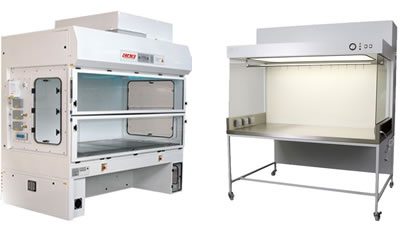
Other associated products include cleanrooms, laminar flow equipment and fume extraction systems.
Biological Safety Cabinet Standards
Detailed regulations exist with regard to the manufacture, installation, usage and maintenance, of which BSI (British Standards Institution) is the main authority.
The HSE (Health and Safety Executive) provides legal enforcement for their proper use and also Defra (The Department of Environment, Food and Rural Affairs), where appropriate
There are two main standards from the British Standards regulatory body. These are BS EN 12469:2000, which covers performance criteria for microbiological safety cabinets, and BS 5726:2005, which provides recommendations for best practice for information provided on Biological Safety Cabinets, such as information to be supplied by the purchaser to the vendor and to the installer, plus recommendations and guidance on the siting, installation and use of biological cabinets.
Mechanical, electrical, chemical and radioactive safety precautions in connection with Biological Safety Cabinets are covered in BS EN 61010-1, BS EN 292-1 and BS EN 292-2.
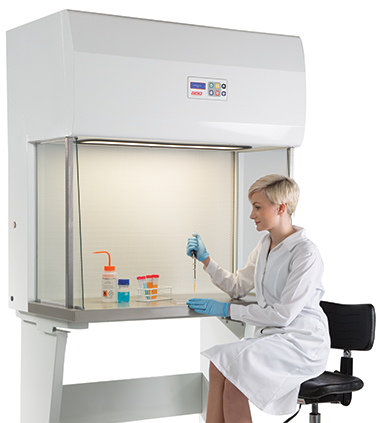
BS EN 12469:2000 Bio-Technology Performance Criteria for Biological Safety Cabinets
Biological Safety Cabinets safeguard users, materials and the environment from aerosol hazards and other types of environmental contamination and are manufactured to BS EN 12469:2000.
BS EN 12469:2000 provides information relating to the type, specification and performance of the different types of Biological Safety Cabinet.
A European Standard specifies basics for Biological Safety Cabinets with respect to safety and hygiene. It sets minimum performance criteria for safety cabinets.
It also specifies test procedures for microbiological safety cabinets with respect to protection of the worker and environment, product protection and cross contamination.
BS 5726:2005 Recommendations on Siting and Use of Biological Safety Cabinets
Biological Safety Cabinets for the containment of infectious agents should be sited, installed and operated correctly, maintained in efficient working order and be subject to regular containment and filter integrity tests.
For laboratory equipment and biotechnology equipment usage, it is a legal requirement that Biological Safety Cabinets are tested regularly to ensure they provide a minimum level of containment and performance.
BS 5726:2005 gives recommendations and guidance on siting, and on usage, for Biological Safety Cabinets as specified in BS EN 12469; as well as recommendations on information to be supplied by the purchaser to the vendor and to the installer.
Recommendations and guidance apply to Biological Safety Cabinets, bio-medical isolating equipment, laboratory furniture and equipment and other bio-safety devices. Issues covered, as well as selection of and installation and positioning, include extract ventilation, ventilation ductwork and air-distribution systems.
Biological Safety Cabinet Classes
There are several different main types of Biological Cabinet, specified by purpose and construction. There are three main classes, with Class 3 cabinets offering the greatest protection:
- Class1 Biological Safety Cabinet
- Class2 Biological Safety Cabinet
- Class3 Biological Safety Cabinet
Class 1 Biological Safety Cabinet
A Biological Safety Cabinet with a working front aperture through which the user can carry out manipulations inside the cabinet. It offers operator protection via inward airflow allowing the escape of airborne particles generated within the cabinet with the aid of HEPA filtration of the exhaust air.
This type of Biological Safety Cabinet is suitable for work with all types of biological agent, except Hazard Group 4. Modern Class 1 Biological Safety Cabinets designed to meet the current British Standard BS EN 12469 give a high degree of protection to the user. Class I Cabinets offers protection for the user but no protection for the work.
Class 2 Biological Safety Cabinet
A Class 2 Biological Safety Cabinet has a front aperture through which the operator can carry out work inside the cabinet. Notably, it provides both worker and materials protection.
Class 2 Biological Safety Cabinets are the most in use bio-containment devices protecting worker, product and environment from potentially dangerous microbiological agents.
A Class 2 Biological Safety Cabinet is designed to control airborne contamination of the work and reduce risks of exposure of the operator to any airborne particles dispersed within the cabinet from the work procedures.
The process is controlled by re-circulating filtered air over the work area combined with inflow air passed through the working aperture.
The escape of airborne particles generated within the cabinet is controlled by means of an inward airflow at the front of the cabinet which is filtered before circulation within it, while the downflow filtered air over the working surface protects the work.
While both Class 2 Biological Cabinets provide additional protection to the work in the case of both the Class 1 and Class 2 type of safety cabinet the pattern of air flow through the working aperture can be disturbed by sudden movements by the operator or around the cabinet. Class 3 Cabinets provide greater protection still.
Class 3 Biological Safety Cabinet
Class 3 Microbiological Safety Cabinets provide total barrier protection for the operator and are suitable for extreme bio hazard
work. Inflow air is HEPA filtered before entering the Class 3 Biological Safety Cabinet via a side mounted inlet filter chamber. Exhaust air is HEPA filtered before leaving the safety cabinet via a single or double HEPA filter, dependant on the customer’s specific technical requirements.
- Total enclosure of the working area
- User separated from the work by a physical barrier
- Filtered air continuously supplied to the safety cabinet
- Exhaust air treated to prevent contamination
- Creates total protection for user and materials
Manipulations within the Class 3 Biological Safety Cabinet are carried out via gloves mechanically attached to the cabinet providing a total seal against any particulate contamination released within the main working area. Only Class 3 cabinets, which are totally enclosed units, are suitable for work with Group 4 hazards.
Microbiological Hazard Groups and Safety Cabinets
Below is a summary of the standard bio-hazard group classifications and their appropriate Biological Safety Cabinet:

Hazard Group 1
Bio agents unlikely to cause disease.
Containment Level 1
Can be handled on an open bench with no containment or clean air technology required.


Hazard Group 2
May cause disease but a low hazard with the spread of disease unlikely and with prophylaxis.
Containment Level 2
Could be handled on an open bench but aerosol emissions will containment, i.e. in a Biological Safety Cabinet.


Hazard Group 3
Possibility of severe disease with spread of disease possible although prophylaxis/treatment is available.
Containment Level 3
Should be handled in a Biological Safety Cabinet.


Hazard Group 4
Causes severe disease with serious bio-hazard risk and a high risk of spread of disease. With prophylaxis/treatment not normally available, this is the most serious bio-hazard risk group.
Containment Level 4
Must be handled in the maximum bio-containment facility, i.e. a Class 3 biological Safety Cabinet.

Modifying Biological Safety Cabinets
Biological Safety Cabinets can be provided conforming to EN 12469:2000 standards and engineered to meet specialist requirements.
Safety Cabinets can be modified to provide additional access to the containment area allowing for loading, unloading or monitoring of internal equipment to suit specific process needs.
Additional features can be fitted to the Biological Safety Cabinet to permit specific processes to be carried out under containment. These can include provision of medical gases, microscopes, wells with drainage facilities, heated or chilled areas, pumps, vacuum connections, etc. When making modifications to a Biological Safety Cabinet, in all cases it is advisable to employ a specialist technician, or one recommended by the supplier.
Biological Safety Cabinet Testing
Microbiological Safety Cabinets must be designed, sited, installed and operated in accordance with British Standards and should be maintained in efficient working order, and managed by a suitably qualified person who adheres to the importance of regular containment and filter integrity tests.
It is a legal requirement that Biological Safety Cabinets receive ongoing testing to ensure their effectiveness is not compromised. This includes examining HEPA filters and ensuring performance and containment criteria are met.
BS EN 12469:2000 gives full details relating to type, specification and performance. Siting should be in accordance with BS 5726:2005. Testing must be in accordance with BS EN 12469:2000 and records kept for inspection.
A certificate of testing must be kept clearly visible on each cabinet. Inspection reports should also be made readily available for inspection by enforcing authorities (HSE and Defra).
Need more information about Bio-Safety Cabinets?
Good sources of information about Bio-Safety cabinets are:
British Standards advice guides. Via its online shop, you can also download PDFs for all the relevant Biological Safety Cabinet standards.
Defra offers advice and guidance at its website i.e., the use of Biological Safety Cabinets for laboratory workers dealing with bio safety within the food, farming, animal and environmental sectors.

Meeting standards
Contained Air Solutions is an ISO 9001 accredited company and a member of the Scottish Society for Contamination Control (S2C2) and the British Standards Institute (BSi).
Contact us
For more information on our safety cabinets, robotics and enclosures, or service and spares department, please fill out our contact form or call us on +44 (0)161 655 8860 for an informal chat or meeting.

